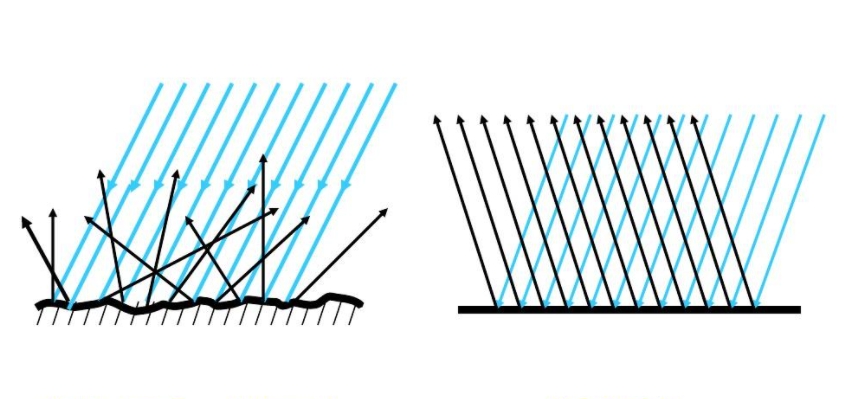Regarding the knowledge about light reflection
Reflection of Light
Reflection of light is a physical phenomenon where light waves partially or entirely bounce off at the interface between two mediums when passing from one medium to another, changing their direction of propagation and returning to the original medium. This phenomenon finds applications in optics, acoustics, water waves, and various other fields.

Specular Reflection:
Specular reflection occurs when light rays reflect off a smooth surface, forming a clear image, as seen in mirror reflections. The law of reflection states that the reflected ray, the incident ray, and the normal to the reflecting surface lie in the same plane, and the angle of reflection equals the angle of incidence. This law applies to specular reflection.
Diffuse Reflection:
Diffuse reflection occurs on non-metallic surfaces where due to microscopic irregularities or surface roughness, light scatters in various directions, not forming a clear image. The Lambertian reflectance model describes diffuse reflection, where light is reflected with equal brightness or radiance in all directions.
Total Internal Reflection:
When light travels from a denser medium to a medium with a lower refractive index, total internal reflection occurs if the angle of incidence is greater than the critical angle. This phenomenon is utilized in optical fiber communications.
Retroreflection:
Retroreflectors reflect light back towards the direction it came from. Examples include the retinas of some animals acting as retroreflectors, enhancing night vision capabilities.
Reflectance and Transmittance:
Reflectance (R) refers to the proportion of light that is reflected and can be calculated using the formula:
where is the refractive index of the incident medium and is the refractive index of the reflecting medium. Reflective mirrors with high reflectance typically have low transmittance.
Transmittance (T) refers to the proportion of light that passes through and can be calculated as:
Multilayer Dielectric Mirrors:
Multilayer dielectric mirrors are constructed from multiple thin film layers with different refractive indices. The thickness and refractive indices of these layers are carefully designed to achieve high reflectance or transmittance at specific wavelengths.
Common examples of multilayer dielectric mirrors include Bragg mirrors and semi-reflective mirrors in Michelson interferometers.
Phase Reversal:
In metal-coated mirrors, the phase of light is reversed upon reflection. This is because the electrons in the metal oscillate under the influence of the incident light, resulting in reflected light with the opposite phase.
These principles of light reflection are fundamental in various optical applications, contributing to advancements in technology and scientific understanding.

